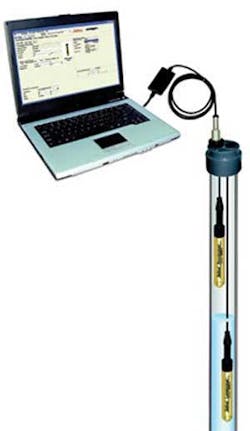Click here to enlarge imageSolinst offers the STS Gold Telemetry System that allows high and low level alarms with SMS messaging when an alarm condition is met. The STS offers multiple communication options, including GSM, CDMA and radio. Suited for small and large networks, it has easily upgradeable components, numerous programming options and includes simple software for network self-management. Collected data can be exported to other programs for further analysis.
A Solinst SDI-12 Interface cable allows Leveloggers to communicate using SDI-12 protocol. This enables connection to other data loggers or PLCs using the same communication protocol. Municipal water supply control systems using this protocol can also set high and low level alarms, providing early warnings of crisis conditions.
Case Study
In 2001, the Ontario Ministry of the Environment and Energy established the Provincial Groundwater Monitoring Network (PGMN), in partnership with 38 Conservation Authorities across the province of Ontario, Canada. Since that time, over 400 wells have been equipped with Leveloggers and Barologgers, and connected to a self-managed Central Data Management System using Solinst telemetry systems.
Monitoring helps the Ministry track long-term drought conditions and obtain province-wide baseline groundwater information. Loggers and telemetry take the most important function of this project, data collection, away from the possibility of human error. The Ministry saves time that would have been spent on field visits and accomplishes its monitoring goal while saving taxpayers’ money. Find out more at: http://www.ene.gov.on.ca/programs/5311e.htm.
System Benefits
Investment in monitoring can reap future benefits and savings. Large monitoring networks, especially those with remote capabilities, can have seemingly high start up costs. However, a Solinst STS and Levelogger network that is priced competitively, and supports individual component upgrades, can give decision makers the detailed data they need to avoid significantly costlier crises.
The goal of all municipalities, when it comes to water supply management, is to maximize and protect their available resources. This is done with success when detailed data:
- Provides long-term limits of current systems
- Quantifies maximum and minimum risks for the network
- Provides feedback on the impact of changes made in the system
Suitable monitoring systems enable the gathering of detailed data, and export reliable continuous data for use in modeling programs, to develop and test the effectiveness of suggested modifications. WW



